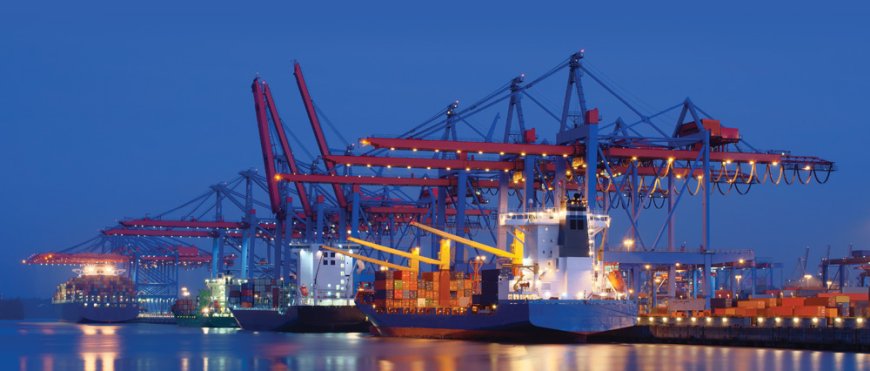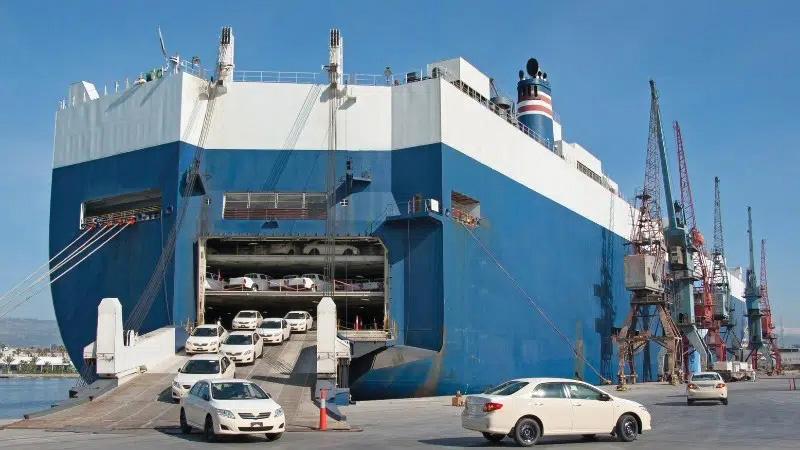SAGARMALA A THRIVING BLUE ECONOMY
India has announced significant investments for the development of its infrastructure sectors in the years to come. This includes ambitious programmes and projects such as the Sagarmala under which 415 projects have been undertaken to develop ports at an estimated

India has announced significant investments for the development of its infrastructure sectors in the years to come. This includes ambitious programmes and projects such as the Sagarmala under which 415 projects have been undertaken to develop ports at an estimated cost of Rs. 8 trillion. Equipment Times looks at how the Sagarmala programme is helping construction equipment manufacturers in terms of possibilities improving for the OEMs, equipment employed, challenges and suggestions that need to be incorporated by the government to ensure not just the success of the programme, but also growth for the construction equipment manufacturers.
India is richly endowed with natural maritime advantages, with a 7,500-km coastline covering 13 states and union territories, a strategic location on key international trade routes and 14,500 km of navigable and potentially navigable waterways. Maritime logistics has been an important component of the Indian economy, accounting for 90 per cent of EXIM trade by volume and 72 per cent by value.
A robust maritime logistics sector with modern and efficient port infrastructure can be a strong catalyst of economic growth. EXIM trade can become competitive through cost-efficient and timely logistics. Coastal and inland waterway transportation is energy efficient, eco-friendly and reduces logistics costs for domestic freight. However, the Indian coastline and river network has historically remained under-leveraged. Despite significantly lower costs, water transport accounts for only 6 per cent of total freight movement in India in tonne km terms. Industrial development has not fully utilised the structural advantages of efficient supply chains leveraging proximity to coast.
Logistics costs account for a large part of the Indian non services GDP compared to developed nations. EXIM containers in India travel a distance of 700 to 1,000 km between production centres and ports, compared to 150 to 300 km in China. Lack of seamless connectivity across various logistics modes and complexity in procedures contribute to high variability in transit times. As a result, container exports take 7 to 17 days from the hinterland to vessel, compared to 6 days in China.
The high variability of transit time impacts the trade since exporters are not able to commit to tight delivery schedules and have to finance higher working capital.
Adequate road and rail connectivity linkages to ports have not been developed in tandem with port development, resulting in instances of new ports with modern facilities being underutilised due to connectivity bottlenecks. For example, one of the factors impeding the utilisation of non-major ports of southern Maharashtra is poor connectivity between industrial centres and ports. Inadequate road and rail linkages through the Western Ghats constrain North Karnataka’s development. Inadequate focus on developing coastal shipping and inland waterways for domestic (non-EXIM) logistics has skewed the modal mix of transport in India with a disproportionately high share of roadways.
The siting and master planning of industrial clusters and zones (often with high EXIM traffic) does not adequately take into account proximity to ports. The port land itself is inadequately utilised for setting up industries and manufacturing. Major ports have 2.71 lakh acre of land, of which 2.35 lakh acre is underutilised. Raw material often travels a large distance from coastal areas to the hinterland and then finished products travel back from the hinterland to the coast for exports. This reduces the competitiveness of Indian exports compared to other exporting countries.
Internationally, several ports have been successful in generating higher value-add and jobs inside the port area compared to the metropolitan area. Existing policies in India for usage of port land are focused on maximising rental yields, rather than the maximisation of overall economic value-add and job creation.
Port-led development opportunity for India
Industrialisation positively impacts per capita income and hence the prosperity of the region. However, for industrialisation to be competitive, it needs to have effective and efficient logistics. Proximity and/or adequate linkages to ports are important factors industry to be competitive. The opportunity from pursuing port-led development is immense in India, as evident from a comparative analysis with China. China leads India by a factor of seven times to 16 times on the measured parameters.
Sagarmala – The Programme in a gist.
The Sagarmala initiative was conceived by the Government of India to address the challenges and capture the opportunity of port-led development comprehensively and holistically. Sagarmala is a national programme aimed at accelerating economic development in the country by harnessing the potential of India’s coastline and river network. Sagarmala was articulated by the then Prime Minister Shri Atal Bihari Vajpayee in 2003 and announced by the Prime Minister Shri Narendra Modi in 2014. It was approved by the Union Cabinet in March 2015.
The Sagarmala Programme is an initiative by the government of India to enhance the performance of the country’s logistics sector. The programme envisages unlocking the potential of waterways and the coastline to minimize infrastructural investments required to meet these targets.
It entails investing Rs. 8.5 trillion (equivalent to Rs. 9.7 trillion, US$130 billion or €110 billion in 2020) (2018) to set up new mega ports, modernizing India’s existing ports, developing of 14 Coastal Economic Zones (CEZs) and Coastal Economic Units, enhancing port connectivity via road, rail, multi-modal logistics parks, pipelines & waterways and promoting coastal community development, with the aim of boosting merchandise exports by US$110 billion and generating around 10 million direct and indirect jobs.
The Sagarmala Programme is the flagship programme of the Ministry of Shipping to promote port-led development in the country by exploiting India’s 7,517 km long coastline, 14,500 km of potentially navigable waterways and its strategic location on key international maritime trade routes. Sagarmala aims to modernize India’s Ports, so that port-led development can be augmented and coastlines can be developed to contribute to India’s growth. It also aims at “transforming the existing Ports into modern world-class Ports and integrate the development of the Ports, the Industrial clusters and hinterland and efficient evacuation systems through road, rail, inland and coastal waterways resulting in Ports becoming the drivers of economic activity in coastal areas.”
Sagarmala vision
“The vision of Sagarmala is to reduce logistics cost for both domestic and EXIM cargo with minimal infrastructure investment.” Studies under Sagarmala have identified opportunities for reducing overall logistics costs, thereby improving the overall efficiency of the economy and increasing competitiveness of exports. A multi-modal logistics optimisation model has been developed to identify the most optimal mode of evacuation to/from ports for both EXIM and domestic cargo. The model suggests substantial opportunities for logistics optimisation.
More Ro-Ro ferry services in pipeline under Sagarmala project; govt issues operational guidelines
The Ministry of Ports, Shipping and Waterways (MoPSW) Ministry is developing 45 Ro-Ro (Roll-on, Roll-off) ferry and waterway transportation projects at an estimated cost of Rs. 1900 Crore in order to reduce travel time logistics costs and pollution, the ministry said in an official statement.
Through the initiative of Sagarmala, the Ministry established Ro-Pax Ferry services between Ghogha-Hazira in Gujarat & Mumbai-Mandwa in Maharashtra to provide for convenient and clean commutation. These services have catered to over 7 lakh passengers and 1.5 lakh vehicles.
Additional projects are planned at Ghodbunder, Veldur, Vasai, Kashid, Rewas, Manori, Pipavav and Muldwarka, JN Port in Maharashtra and Pipavav and Muldwarka in Gujarat. In addition to these, the Ministry is also financing projects in various other states. These include 4 projects in Andhra Pradesh, 2 in Odisha, and 1 each in Tamil Nadu and Goa.
BOX
NSAC reviews the progress of the Sagarmala program & deliberates on various agendas.
 Union Minister for Ports, Shipping and Waterways Sarbananda Sonowal has said building upon the success of the Sagarmala Programme, Ministry of Ports Shipping and Waterways has formulated a plan under the Sagarmala Programme for carrying out “Holistic Development of Coastal Districts”. Briefing the media after the meeting of the National Sagarmala Apex Committee (NSAC) he said after multiple consultations with stakeholders, the Ministry has identified a total of 567 projects under convergence mode with an estimated cost of Rs. 58,700 Crore. He said while Sagarmala is Port-led and focusses on the logistic cost reduction and EXIM competitiveness, Holistic Development of Coastal Districts aims to bridge the gaps in infrastructure at the coastal areas and improve economic opportunity. The minister said with addition of projects identified in Holistic Development of Coastal Districts and new project proposals received under Sagarmala, total number of projects stands at 1537 worth Rs. 6.5 lakh crore.
Union Minister for Ports, Shipping and Waterways Sarbananda Sonowal has said building upon the success of the Sagarmala Programme, Ministry of Ports Shipping and Waterways has formulated a plan under the Sagarmala Programme for carrying out “Holistic Development of Coastal Districts”. Briefing the media after the meeting of the National Sagarmala Apex Committee (NSAC) he said after multiple consultations with stakeholders, the Ministry has identified a total of 567 projects under convergence mode with an estimated cost of Rs. 58,700 Crore. He said while Sagarmala is Port-led and focusses on the logistic cost reduction and EXIM competitiveness, Holistic Development of Coastal Districts aims to bridge the gaps in infrastructure at the coastal areas and improve economic opportunity. The minister said with addition of projects identified in Holistic Development of Coastal Districts and new project proposals received under Sagarmala, total number of projects stands at 1537 worth Rs. 6.5 lakh crore.
Sonowal said the committee reviewed the progress of the Sagarmala program and deliberated on various agendas. He said there are 802 projects worth Rs. 5.5 lakh Crore under the Sagarmala program targeted to be executed by 2035. Out of which, 202 projects worth Rs. 99,281 Crore have been completed. He said a total of 29 projects worth Rs. 45,000 Crore have been successfully implemented under PPP model, thus, reducing the financial burden on the exchequer. Additional 32 PPP projects worth Rs. 51,000 Crore are currently being implemented. Further, there are more than 200 projects worth Rs. 2.12 lakh Crore under construction and expected to be completed in 2 years’ time, he added.

Hits: 12








